Revealing Why Parents Once Used Baby Cages To Hang Their Infants Out Of Windows
In the 1930s, city dwellers in London and beyond embraced a parenting trend that may seem bizarre today—hanging their babies out of apartment windows in metal cages for “fresh air.”
These chicken coop-like structures, known as baby cages, were part of a broader movement to improve infant health through exposure to fresh air.
While they may seem shocking now, these cages were considered an innovative solution for urban parents living in cramped, stuffy apartments without access to outdoor space.
Let’s explore the history of this strange fad and its roots in early 20th-century child-rearing practices.
How This Trend Picked Up
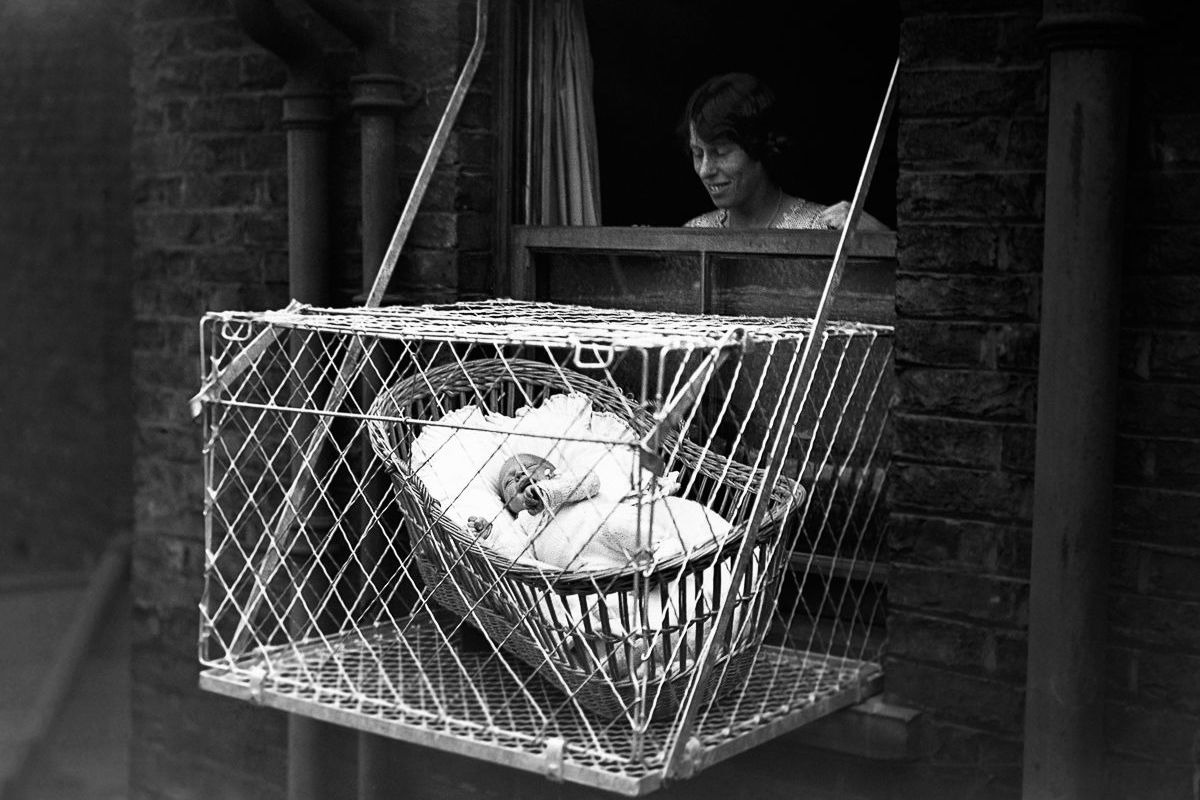
The concept of “airing” babies didn’t come from nowhere. It can be traced back to 1894 when American pediatrician Dr. Luther Emmett Holt published The Care and Feeding of Children.
Holt advocated exposing infants to fresh air as a way to boost their immunity and overall health.
In his book, he wrote, “Fresh air is required to renew and purify the blood, and this is just as necessary for health and growth as proper food.” Holt believed that fresh air would improve a baby’s appetite, digestion, and overall strength.
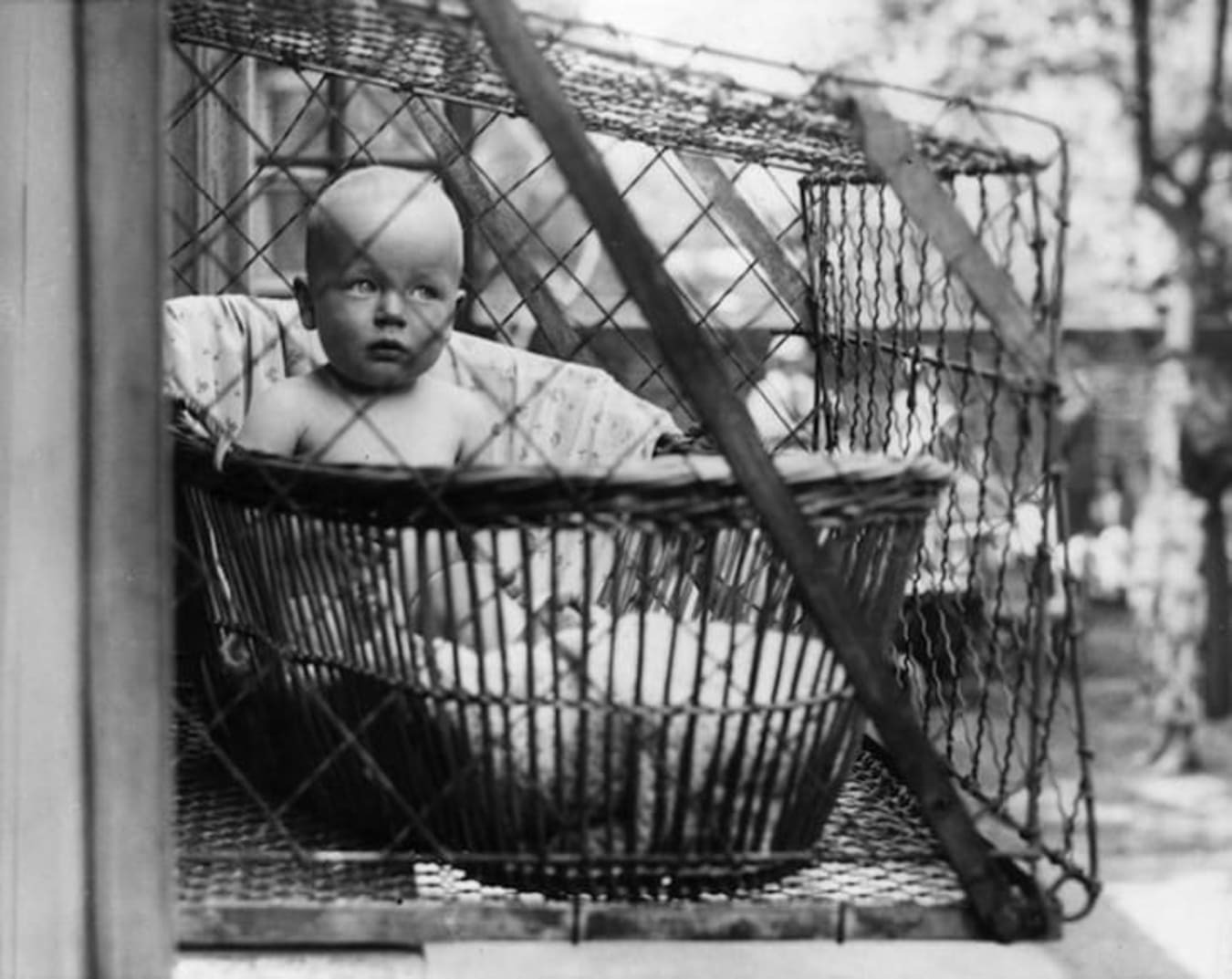
At the time, many illnesses plagued urban areas due to overcrowded living conditions, and Holt’s advice resonated with parents.
He recommended putting babies near open windows or taking them outside to help prevent common illnesses like colds. However, this idea would soon evolve into something far more extreme.
The Birth Of The Baby Cage
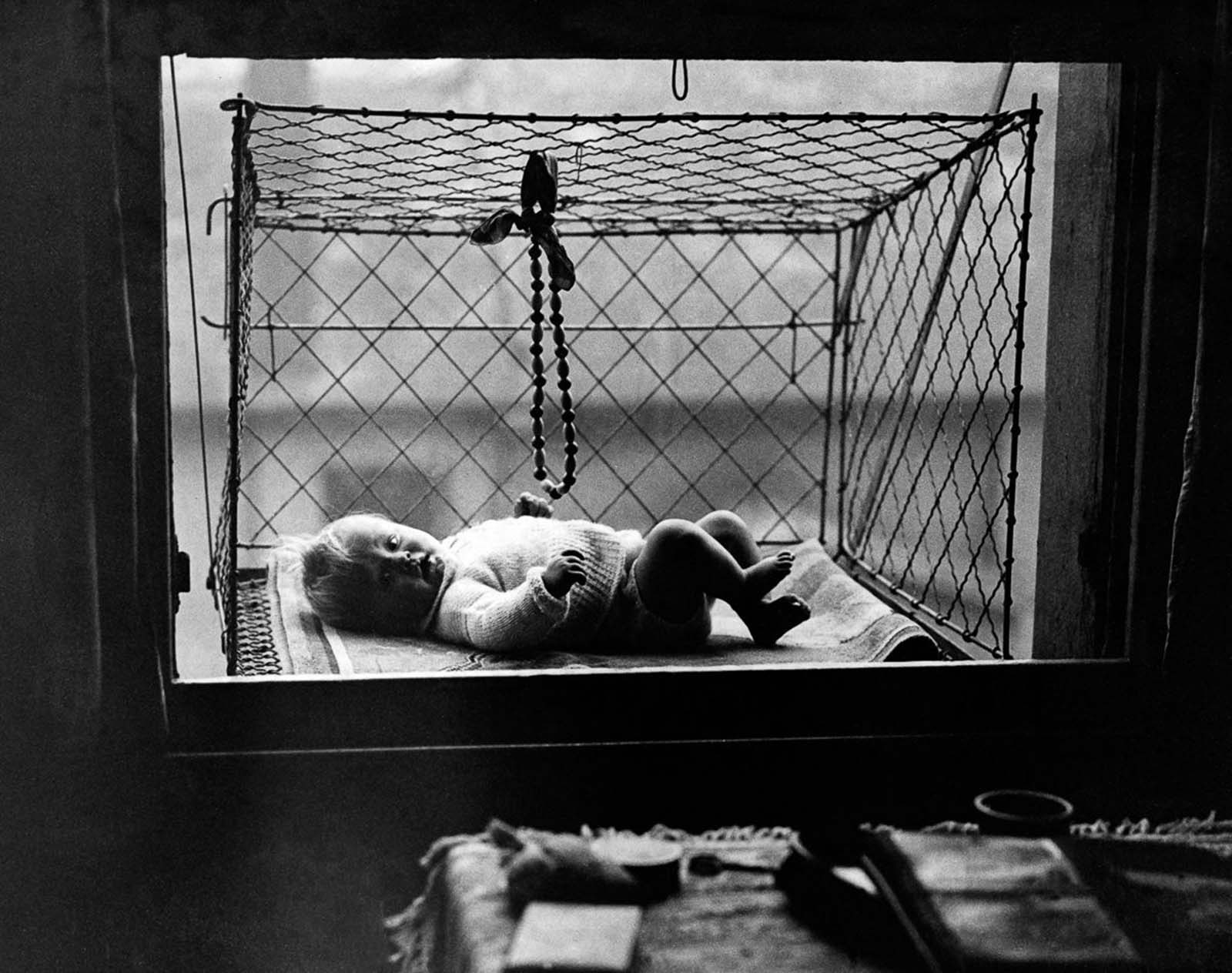
In the early 20th century, as cities grew more crowded, many families living in apartments lacked outdoor space. This prompted some parents to take Holt’s advice a step further.
Rather than simply placing a baby near an open window, they began hanging wire cages out of windows, where infants could safely get fresh air several stories above the bustling city streets.
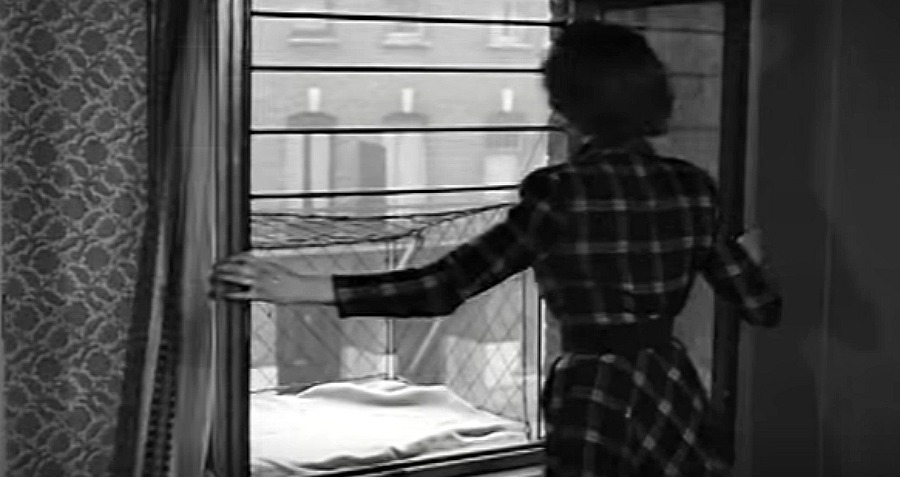
The first patent for a baby cage was filed in 1922 by Emma Read of Spokane, Washington. In her patent, Read described her invention as a “portable baby cage,” designed to be suspended outside of apartment windows.
The idea was to create a safe space for babies to breathe in fresh air, even in crowded urban environments.
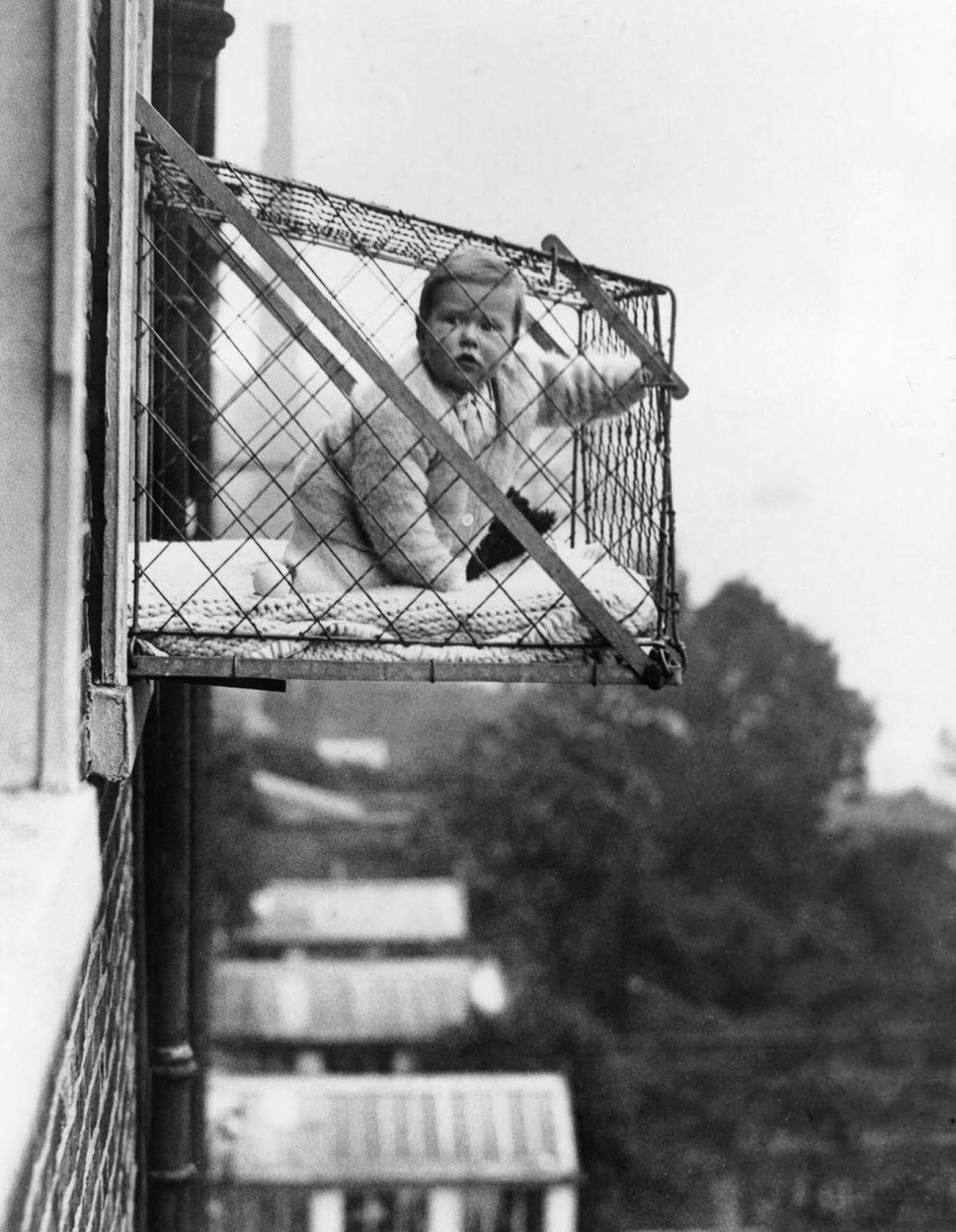
While baby cages gained moderate popularity in the U.S., they truly took off in London in the 1930s.
British apartment dwellers embraced the cages as a solution for airing their babies in buildings without backyards or gardens.
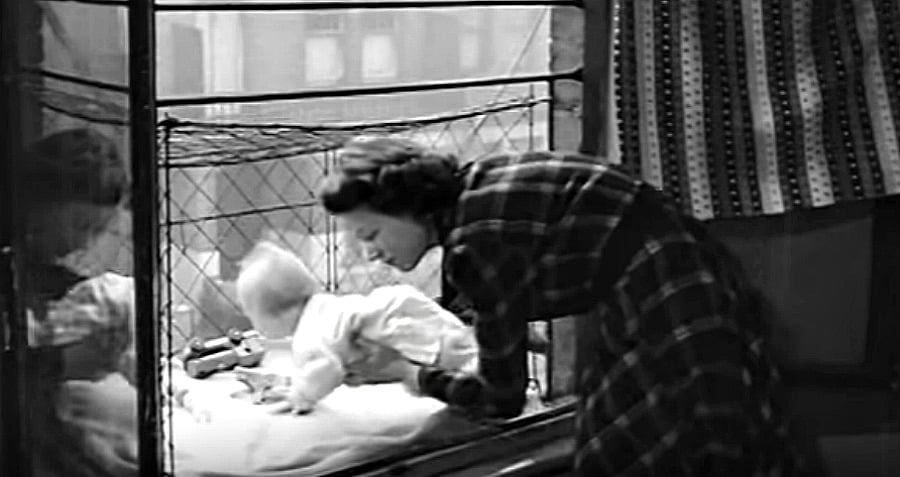
The Chelsea Baby Club distributed these cages to families who lived in high-rise buildings, and soon, they became a common sight across the city.
The Baby Cage Craze In 1930s London
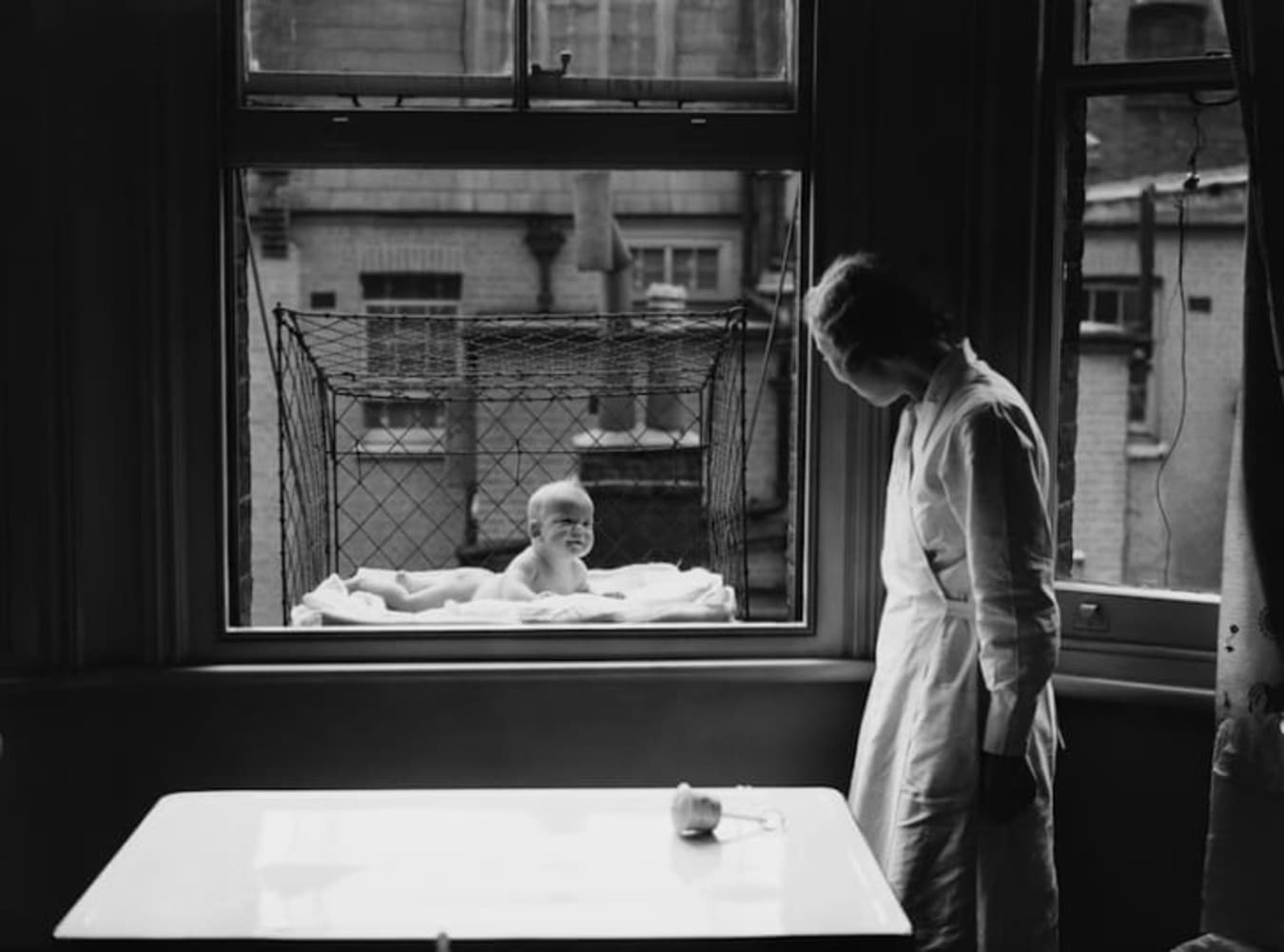
By the mid-1930s, London streets were adorned with baby cages protruding from windows like air conditioning units.
Parents, particularly mothers, believed that exposing their babies to cold, fresh air would strengthen their immune systems. Babies were often dressed in bonnets and light coats and placed in cages to nap, their tiny faces exposed to the elements.
While the practice seems alarming today, at the time, it was fully supported by parenting experts and even promoted through promotional videos.
British Pathé, for example, produced films in the 1940s and 1950s touting the benefits of baby cages, showing mothers placing their infants into these wire enclosures while they stood several stories above the ground.
Eleanor Roosevelt, the future First Lady of the United States, even tried the practice herself. In 1906, she famously bought a chicken-wire cage for her daughter, Anna, and hung it outside her New York City apartment window.
However, after concerned neighbors threatened to call the authorities, she quickly abandoned the idea.
The Decline Of Baby Cages
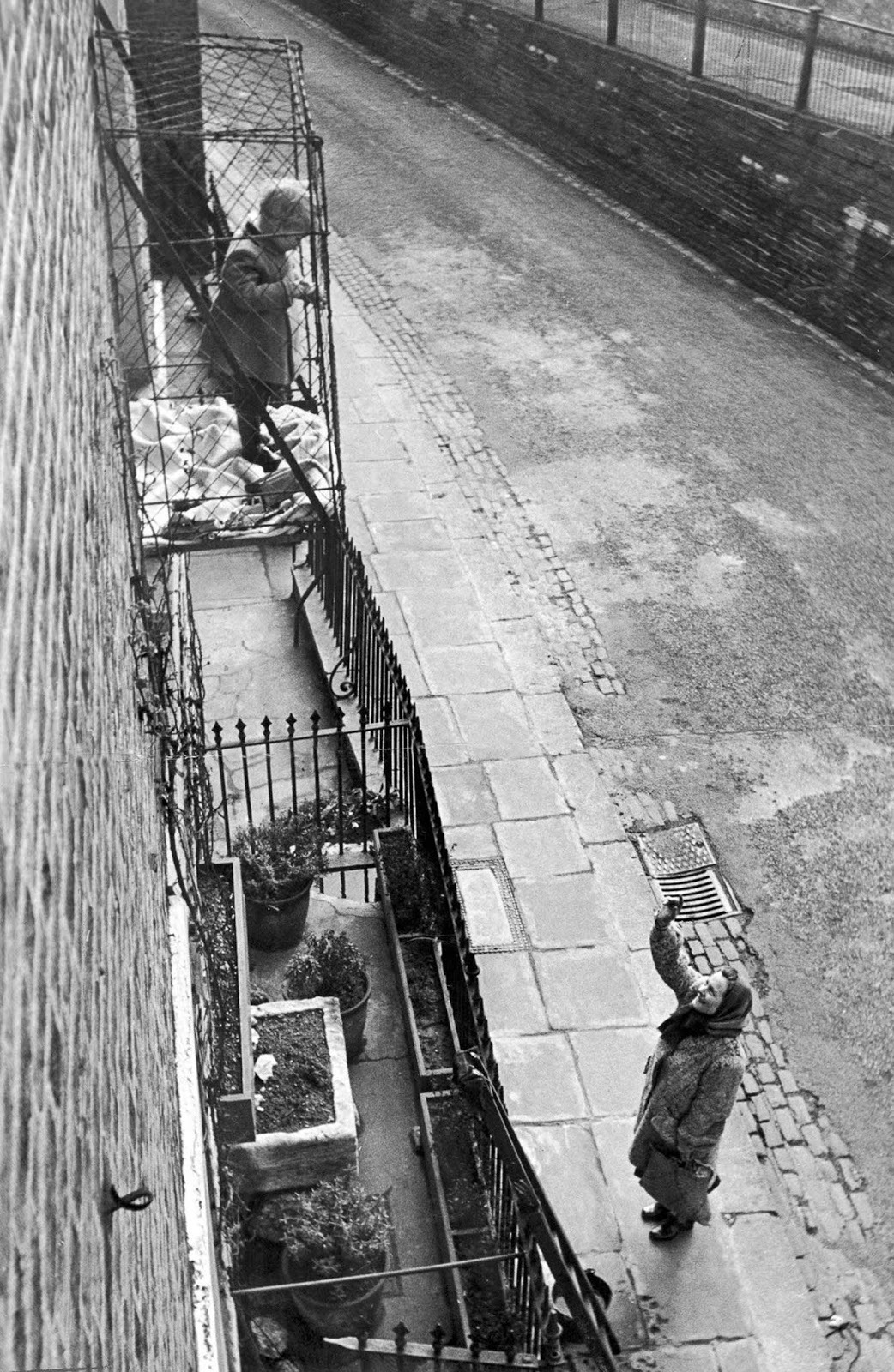
As the 20th century progressed, the popularity of baby cages began to wane. By the 1950s, growing concerns about child safety began to overshadow the perceived health benefits.
People started questioning the security of these cages, especially in cities with increasingly polluted air.
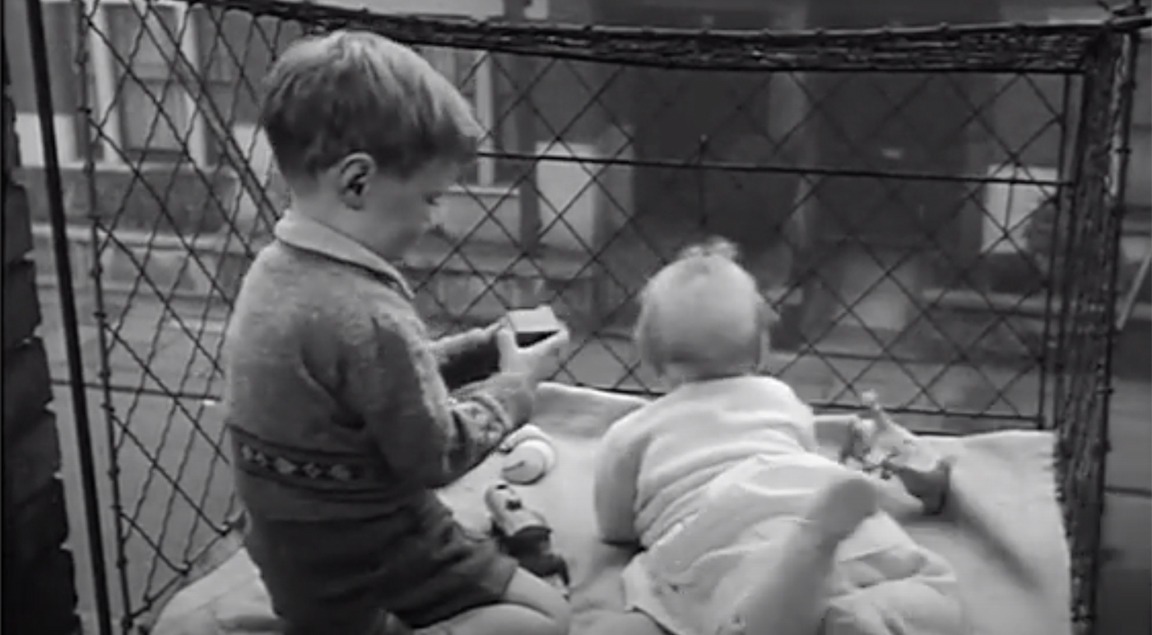
Additionally, advancements in medicine and a better understanding of germ theory cast doubt on the idea that fresh air alone could protect babies from illness.
With no scientific evidence supporting the idea that cold air could “toughen up” infants, baby cages eventually fell out of favor. By the late 20th century, the fad had all but disappeared.
From Baby Cages To Modern Trends
While baby cages may have vanished, the idea of exposing infants to fresh air persists in some cultures.
In Scandinavia, for example, it’s still common to see babies left in strollers outside cafés and restaurants while their parents enjoy a meal inside.
Much like the baby cages of the 1930s, this practice is believed to promote better sleep and overall health for infants.
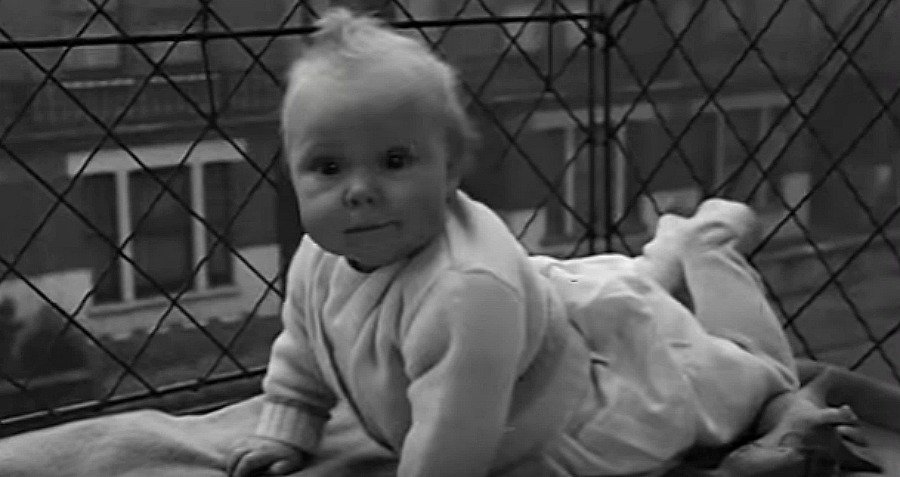
The history of baby cages reminds us of how child-rearing practices change with time and how beliefs about health and safety evolve.
What once seemed like a practical solution for urban families now feels shocking and unsafe. Still, the baby cage serves as an intriguing chapter in the history of parenting.

